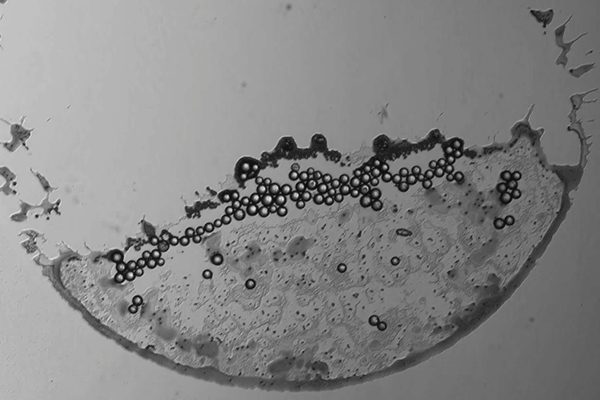Looking to Mud to Study How Particles Become Sticky
A collaboration of geophysicists and fluids mechanics experts led to a fundamental new insight into how tiny ‘bridges’ help particles of all kinds form aggregates.

By Katherine Unger Baillie
It happens outside every time it rains: The soil gets wet and may form sticky mud. Then it dries. Later it might rain again. Each wetting and rewetting affects the structure and stability of the soil. These changes are taken into account when, for example, architects and engineers design, site, and construct buildings. But more broadly, the science of how particles stick together and then pull apart touches fields as diverse as natural hazards, crop fertilization, cement production, and pharmaceutical design.
Uniting these disparate fields, a team at the University of Pennsylvania has found that when particles are wet and then allowed to dry, the size of those particles has a lot to do with how strongly they stick together and whether they stay together or fall apart the next time they are wetted.
What lends these sticky aggregates strength, the team found, are thin bridges formed when particles of the material are suspended in a liquid and then left to dry, leaving thin strands of particles that connect larger clumps. The strands, which the researchers call solid bridges, increase the aggregates’ stability 10- to 100-fold.
The researchers reported their findings in the journal Proceedings of the National Academy of Sciences.
“This solid bridging phenomenon may be ubiquitous and important in understanding the strength and erodibility of natural soils,” says Paulo Arratia, a fluid mechanics engineer in Penn’s School of Engineering and Applied Science and a coauthor on the study.
“We found that a particle’s size can outweigh the contribution of its chemical properties when it comes to determining how strongly it sticks to other particles,” says Douglas Jerolmack, a geophysicist in the School of Arts and Sciences and the paper’s corresponding author.
The research team was led by Ali Seiphoori, formerly a postdoc in Jerolmack’s lab and now at the Massachusetts Institute of Technology, and included physics postdoc Xiao-guang Ma. The current work developed from investigations they had been pursuing in conjunction with Penn’s Perelman School of Medicine on asbestos, specifically how its needle-like fibers stick to one other and to other materials to form aggregates. That got them thinking more generally about what determines the strength and stability of an aggregate.
The group took an experimental approach to answering this question by creating a simple model of particle aggregation. They suspended glass spheres of two sizes, 3 microns and 20 microns, in a droplet of water. (For reference, a human hair is roughly 50 to 100 microns in width.) As the water evaporated, the edges of the droplet retreated, dragging the particles inward. Eventually the shrinking water droplet transformed into multiple smaller droplets connected by a thin water bridge, known as a capillary bridge, before that, too, evaporated.
Continue reading at Penn Today.
